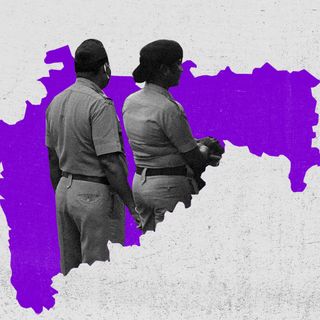
Definition of ‘Dowry’ Should Include Any Material Demands Made From Women: SC
When dealing with dowry provisions – meant to act as a deterrent – the courts’ approach must shift “from strict to liberal.”

On Tuesday, the Supreme Court, in a judgment, decided to expand the scope of “dowry” under Indian laws. The court was hearing the case of a five-month-pregnant woman who set herself on fire after her in-laws consistently harassed her for dowry by asking her to pay for the construction of their house.
In India, under the DowryProhibitionAct, 1961, “dowry” is defined as “any property or valuable security” that parties to a marriage exchange between each other.
However, according to Justices N.V. Ramana, A.S. Bopanna, and Hima Kohli, who heard the case, the definition requires a more liberal interpretation. “…the word ‘dowry’ ought to be ascribed an expansive meaning so as to encompass any demand made on a woman…” the judgment stated. “When dealing with [dowry] cases… a provision legislated to act as a deterrent in society and curb the heinous crime of dowry demands, the shift in the approach of the courts ought to be from strict to liberal, from constricted to dilated… Any rigid meaning would tend to bring to naught the real object of the provision. Therefore, a push in the right direction is required to accomplish the task of eradicating this evil, which has become deeply entrenched in our society.”
What the judges meant is that, in practice, dowry isn’t restricted to a plot of land, a car, or a bag of money. In the present case, for instance, it included demanding money to construct a house. The coercive tactics involved there, too, resulted in significant mental trauma to the woman who resorted to immolating herself to end the oppression.
Related on The Swaddle:
India’s Dowry Laws Are Ineffective, Easily Exploited, and Women Are Paying the Price
In India, 21 women die every day due to dowry-related violence. It begs the question: will expanding the scope of “dowry” help, and if so, how?
“[A]necdotally about half of the weddings in my family and friend’s circles involve dowry… Still, it’s rarely reported as a crime. According to the National Crime Records Bureau of India, in a country with nearly 10 million weddings a year, less than 10,000 cases of dowry were reported in 2015. Dowry gets reported only when the groom’s demands go beyond what the bride’s family can afford or when the bride is physically abused or, worse, killed, as cases that gained media attention show,” Kavya Sukumar wrote in Vox.
Many Indian families perceive “dowry” as a small price to pay for their daughter’s life-long marital bliss — without realizing that respect and affection shouldn’t have to be literally bought.
In 2019, The Better India spoke to the family of Ria, a girl whose marriage was arranged by her family after they agreed to fulfill her future in-laws’ “demands.” They said, “Dowry is legally and morally wrong, but this is part of a tradition and social custom. This is just to ensure happiness for all. They are not asking for dowry. They are gifts for the relatives of the boy’s family. They must have a certain value or be of a certain mark. This is not at all dowry. This is just to ensure that the girl’s family has a good name in the boy’s family. This is to ensure that the girl is treated well in the boy’s family. This is not ‘dowry’ as it is claimed to be.”
Related on The Swaddle:
‘Made In Heaven’ Shows the Calculated Compromises Women Make to Survive
Basically, for many in India, like Ria’s family members, dowry isn’t considered wrong per se; it is often perceived more as a “social necessity” than a “social evil,” as Kavya pointed out. Tradition and marital well-being become shorthand to justify this necessity.
As such, a mere expansion in the definition of “dowry” may not really go a long way in eradicating the practice. Even the deterrents — “imprisonment not less than five years, and a fine not less than Rs. 15,000, or the amount of value of the dowry, whichever is greater” for taking or abetting dowry; “imprison[ment] for a period between six months to two years, along with a fine which may extend to Rs. 10,000” for demanding dowry — have not been particularly successful either.
One would think that through education, greater sensitization regarding dowry being a practice that shouldn’t have made its way into the 21st century would, perhaps, be more helpful. However, given that educated grooms often demand greater dowries — using their higher education as leverage, in fact — it’s unlikely that education alone can trump the decades of conditioning that has made dowry an almost inextricable part of India’s socio-economic fabric.
Nonetheless, for people subjected to dowry-related harassment, who do want to take their perpetrators to court, the liberal interpretation of the term might act as a stronger legal backing and enable them to get justice.
Devrupa Rakshit is an Associate Editor at The Swaddle. She is a lawyer by education, a poet by accident, a painter by shaukh, and autistic by birth. You can find her on Instagram @devruparakshit.
Related


Maharashtra Issues Police Guidelines to ‘Sensitively Handle’ Crimes Against Women, Children
